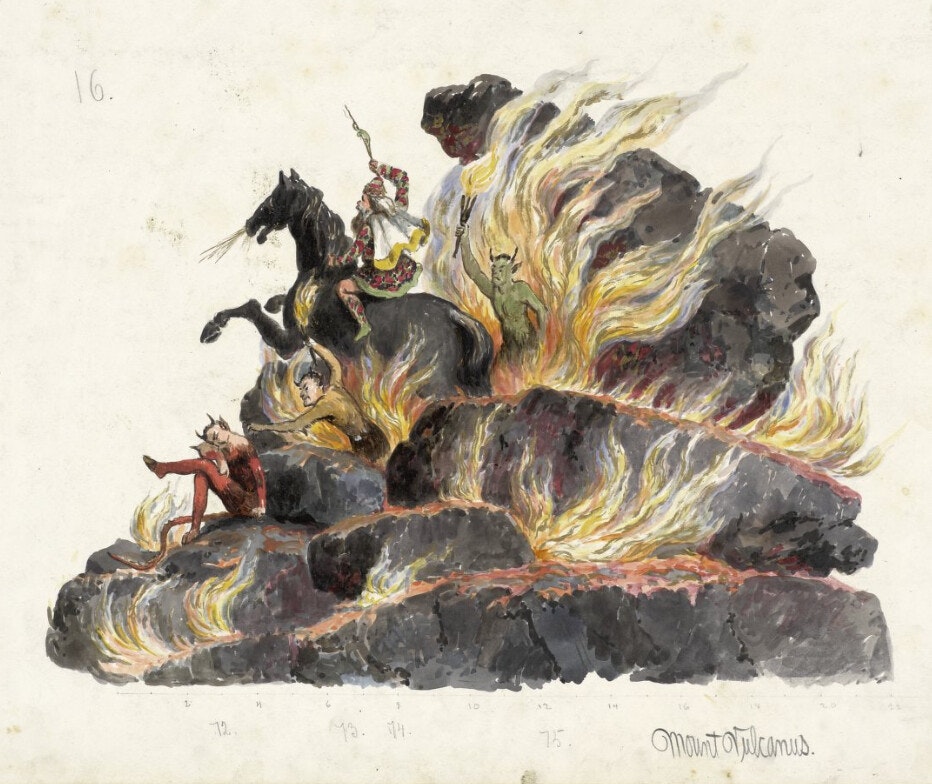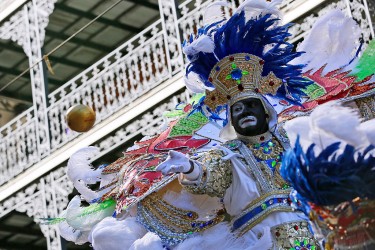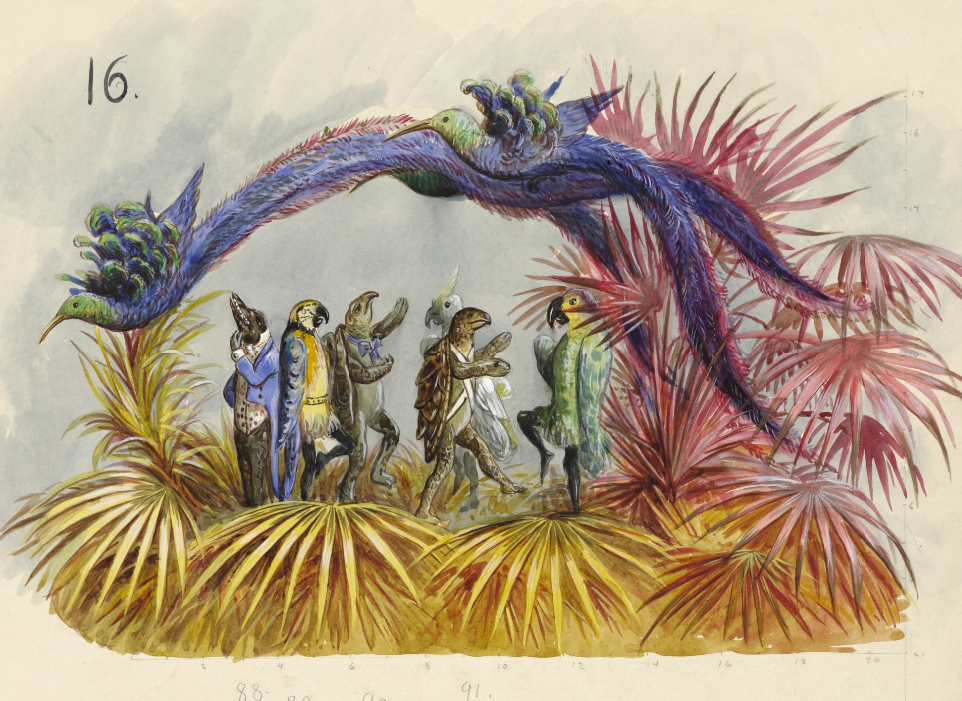On March 6, 1889, the New York Times breathlessly reported on the recent Carnival spectacles in New Orleans. The Krewe of Rex's pageant, themed around "Treasures of the Earth", included a "Crystal" float "attended by figures in gorgeous costumes and prisms by the thousand", and a "Diamond" float featuring "a rocky diamond dell” through which flowed “limpid streams where nymphs sported and played with the gems”. The Krewe of Proteus, meanwhile, dazzled with their “Hindoo Heavens” pageant, where in one scene appeared Agni “God of Fire" riding a ram that "strides the flames, attended by the fire sprites.” This opulent, and highly exoticized, interpretation of South Asian religion concluded with a tableau where "Vishnu, under the guise of a horse with silver wings, shatters the earth with his hoof and rises to the celestial abode.”
The modern American Mardi Gras owes much of its bombastic revelry to this late nineteenth-century “Golden Age” of Carnival design. From the invitations to the costumes to the hand fans carried by spectators, artists designed entire identities for each Krewe (a group that organizes a Carnival event). Carnival and its culminating day of festivities — Mardi Gras — was brought to the Louisiana area by the French in the late seventeenth century. Mardi Gras as it’s celebrated today is often linked to the Mistick Krewe of Comus, an Anglo-American group which in 1857 organized a debut parade themed "The Demon Actors in Milton's Paradise Lost”. It was a departure from previous Carnivals that were more informal and tied to the Roman Catholic community. Following the Civil War, new Krewes emerged, each attempting to outdo the others with increasingly elaborate wood and papier-mâché floats pulled by teams of horses. One year it might be Medieval legends coming to life on the streets, the next flying monkeys of Chinese mythology terrorizing the crowds.

"Bayard escapes from Mount Vulcanus" by Carlotta Bonnecaze for the "Legends of the Middle Ages" theme, Krewe of Proteus, 1888: Carnival Collection, Louisiana Research Collection, Tulane University — Source (some potential restrictions on reuse).

"Assuri" costume design by Carlotta Bonnecaze for the "Myths and Worships of the Chinese" theme, Krewe of Proteus, 1885: Carnival Collection, Louisiana Research Collection, Tulane University — Source (some potential restrictions on reuse).
"The city developed a Carnival aesthetic that blended popular Carnival tradition with the artistic currents of the late nineteenth century”, writes Reid Mitchell in the 1995 book All on a Mardi Gras Day: Episodes in the History of New Orleans Carnival. "The latter contributed largely to Carnival's Orientalism. Carnival with its costumes, processions, tableaux, and bals masque played to the late nineteenth-century love of fantasy, of exoticism.”
Mythology, literature, religion, and history, as well as nineteenth-century book illustration and turn-of-the-century Art Nouveau, were remixed into an eclectic excess. Up to the early 1900s, the main Krewes were Rex, Comus, Proteus, and Momus, each with their favorite artist collaborators. The names of these individuals are now obscure, but artists Jennie Wilde, Bror Anders Wikstrom, Charles Briton, Carlotta Bonnecaze, and others now anonymous all influenced the embrace of the fantastic that endures into the present. The greatest publicly accessible resource of their art is the Carnival Collection, part of the Louisiana Research Collection (LaRC) at Tulane University and supported by a bequest from the late journalist Charles L. "Pie" Dufour. In 2012, Tulane marked the completion of a two-year digitization project that put over 5,500 float and costume designs in the Carnival Collection online.













